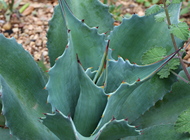 |
Aralia elata |
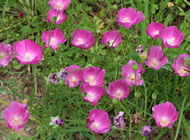 |
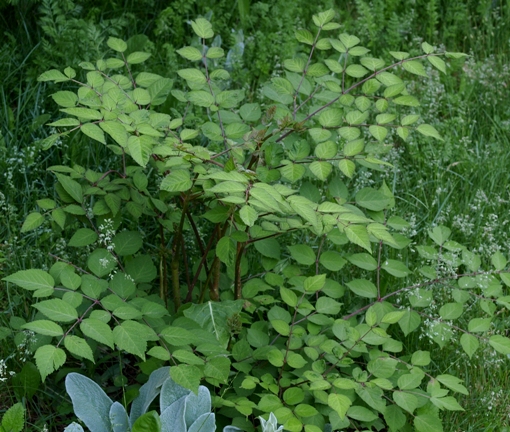
| | Fourth-year sapling |
| 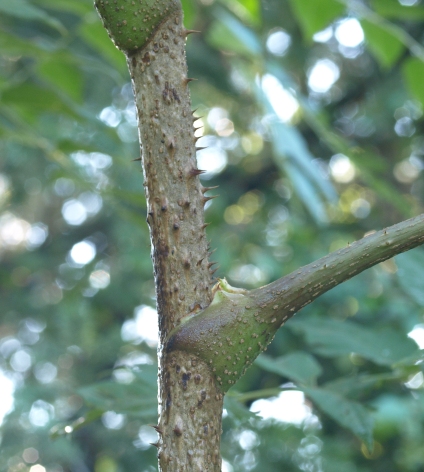
| | Thorny trunk |
|
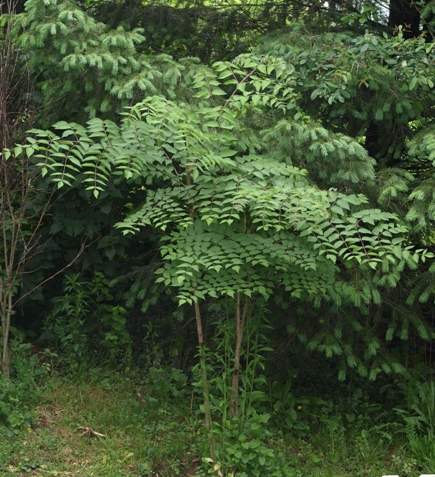
| | Starting to show its habit and form as a sixth-year tree |
| Common name |
Japanese angelica tree |
| Family |
araliaceae |
| Life cycle |
tree (Z3-8) |
| Flowers |
white (summer) |
| Size |
20-40' |
| Light |
sun-part shade |
| Cultural notes |
prefers moist soil |
More elegant in form than most other aralias, it still features the thorns common to many species. Only one of several seedlings survived its first year in our garden; after living in our orchard nursery area for two years, it finally got a more permanent garden location on the berm at the back of our yard. It's amazing how quickly the winter form (just upright unbranched stems) transforms into a lush tree with handsome foliage, once warm weather arrives in spring.
|
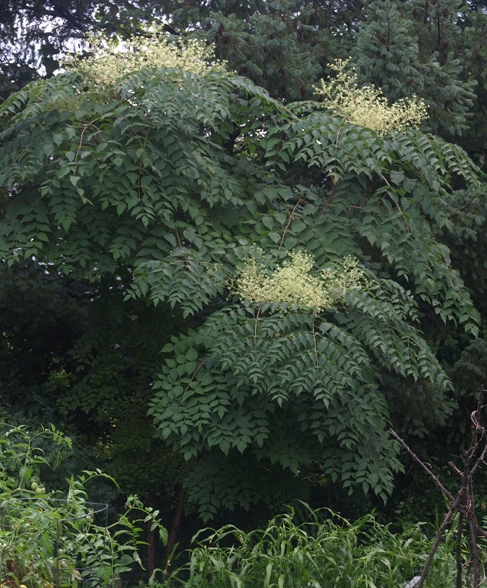
| | After a good number of years, plumes of creamy-white flowers started appearing atop the tree. |
| 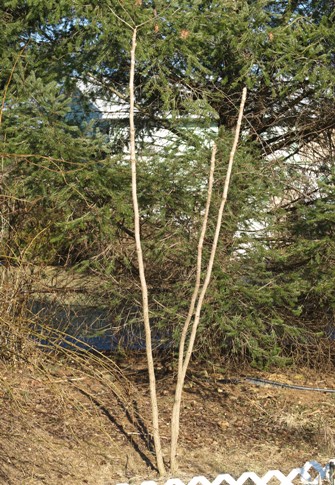
| | Just gangly upright sticks in winter and early spring |
|
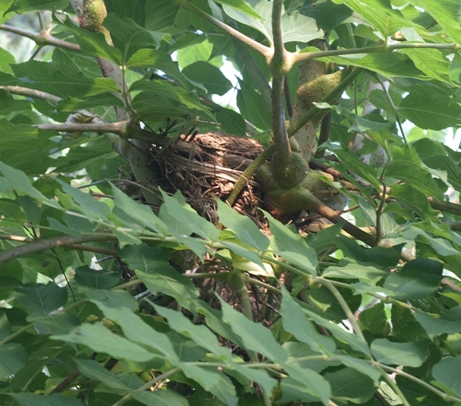
| | The dense foliage and thorns make for a fine bird's nest location |
| 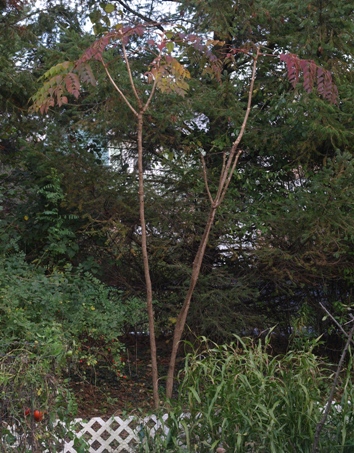
| | Late October – nearly back to its stick state |
|
We left this plant behind in our Pennsylvania garden (and wish it well); we don't grow it in Houston. About my plant portraits
PlantLinks to other web pages about Aralia elata
Visitors to this page have left the following comments| BD | May 20, 2010 | Q Aralia Elata - is this sometimes called "Old mans walking stick" or similar?
Have one that looks like picture, though drastically pruned. Had it for 12 mths & it looks like the Japanes Angelica (Aralia....) shown on your site. Currenly it is in a pot- should I introduce it to the soil? It originally looked like a walking stick - no leaves!
Yep, they look pretty bare before they leaf out for the season. A close cousin, Aralia spinosa, is known as "devil's walking stick", but of course common names vary from place to place. |
| Don | May 25, 2015 | There are a lot of warnings on the internet about this species as invasive in Pennsylvania. It looks just like our native A. spinosus, so why grow the Japanese species? References: PA DNCR, NPS, NYBG, Extension.org |
- Seed from '06 trade. a) baggy 35F (12w) - 70F (9w; no G).
b) baggy 70F (4w) -35F (13w) - 70F (12%G, 11-17d)
I welcome comments about my web pages; feel free to use the form below to
leave feedback about this particular page. For the benefit of other visitors
to these pages, I will list any relevant comments you leave, and if
appropriate, I will update my page to correct mis-information. Faced with an
ever-increasing onslaught of spam, I'm forced to discard any comments including
html markups. Please submit your comment as plain text. If you have a
comment about the website as a whole, please leave it in my
guestbook. If you
have a question that needs a personal response, please
e-mail me.
Last modified:
October 26, 2014
Contact me
|









